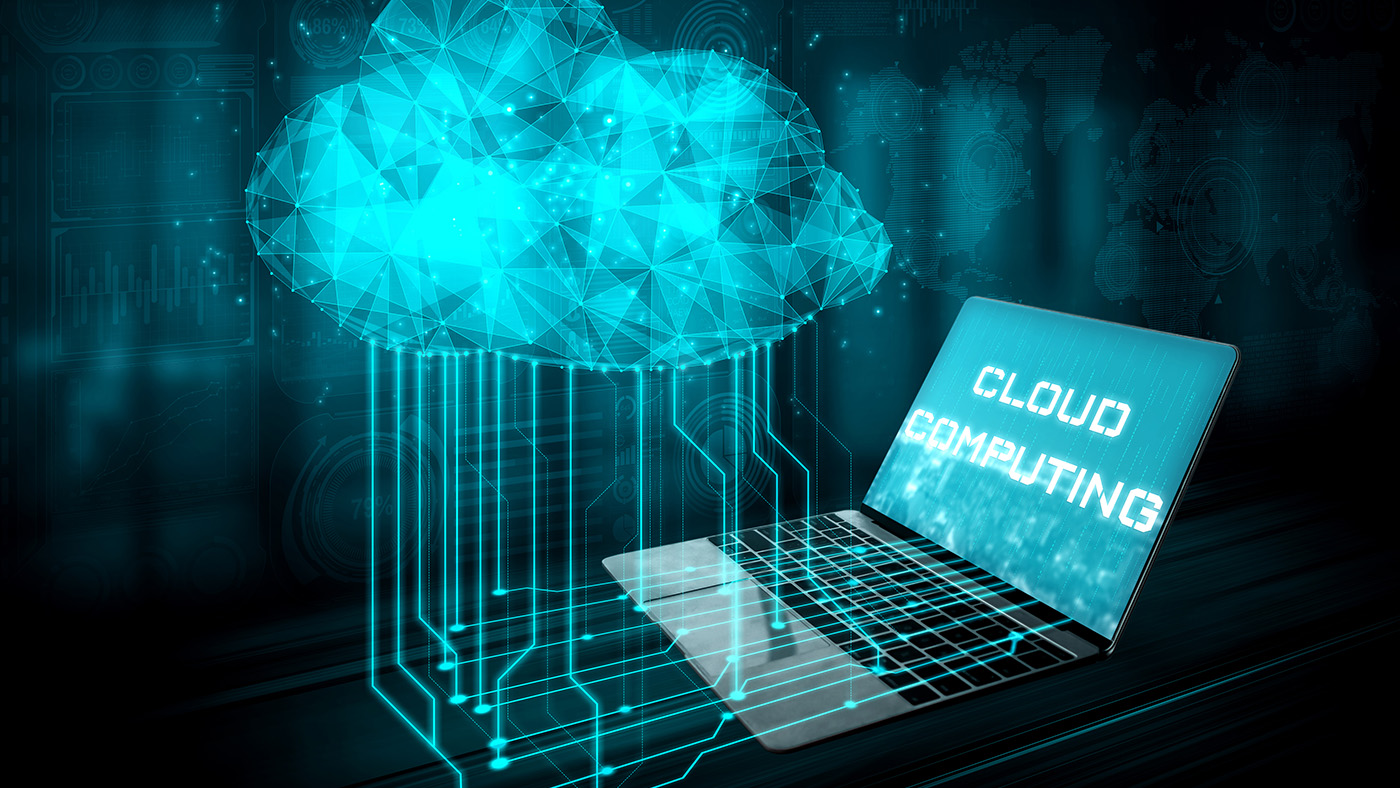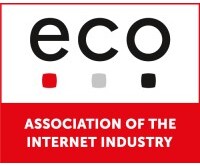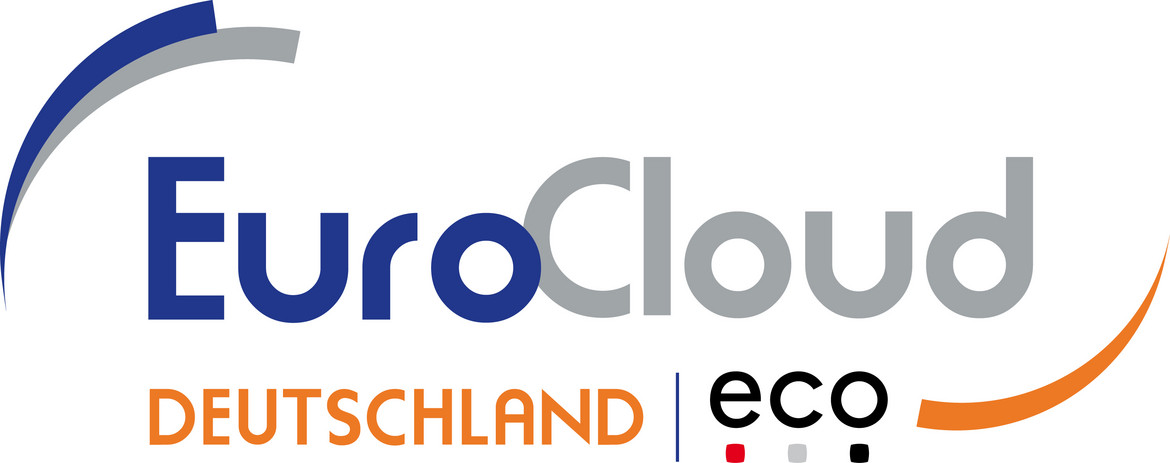Industry as a Driver for the Digitalization of the European Economy?
Why the “old economy” is driving the digital transformation in the Old World, reveals Ernst Stöckl-Pukall, German Economics Ministry, in an interview with Andreas Weiss and Thomas Sprenger, GXFS-DE.

© anyaberkut| istockphoto.com
The inventors of the cloud all come from the US digital economy: They run search engines and social networks, e-commerce platforms and software groups. The innovators of the cloud come, with a bit of luck, from Europe, and many heavyweights among them are classic industrial groups. Why, of all things, the “old economy” is driving the digital transformation in the Old World and even becoming the nucleus for Europe’s new cloud and data infrastructure, reveals Ernst Stöckl-Pukall, Head of Division for Digitalization and Industry 4.0 at the German Federal Ministry for Economic Affairs and Climate Action (BMWK), reveals in an interview with Andreas Weiss, Head of Digital Business Models at eco, and Thomas Sprenger, independent author for GXFS-DE.
Why is industry so important to Europe’s response to the big US clouds?
Ernst Stöckl-Pukall: In Europe, we will only achieve the necessary scale in terms of digitalization with industry. With broad-based initiatives like Gaia-X, industry has to be on board and has to really want to be; that’s when things will start moving. One example of this momentum is the flagship project Catena-X, with which the automotive industry aims to digitalize its supply and process chains.
As important and innovative as all Gaia-X funding projects are: Catena-X and the Gaia-X Mobility data space stand out. But we need to engage all sectors of industry with its complex and global interdependencies. That’s what we’re working on. With industry making up a big part of its economy, its digitalization is essential for Germany’s future competitiveness. As industry builds the data ecosystems of the future, there is a huge potential for innovation that will sweep through the entire economy. We have that chance right now. If we want to achieve this, however, we have to overcome another challenge: The cloud market has not yet delivered the solutions and framework conditions that the industry needs for digital transformation in the coming years.
What problems is the industry struggling with in terms of digitalization?
Stöckl-Pukall: When it comes to automation, industry is by no means lagging behind. No other industry achieves this level of efficiency. The smart factory is often already a reality. The situation is different for data-based and cross-company business models: The exchange of data within the supply chain is often still carried out with a high manual and personnel effort. In the automotive industry, for example, the large manufacturers employ numerous employees who spend time on the phone trying to locate and resolve faults in their global supply chains.
Before just one bit is transmitted, a car manufacturer, for example, must coordinate technical and legal framework conditions with each of its partners individually in the supply chain. This drives up the transaction costs for data-based cooperation, and complex data-based applications are hardly feasible. And then there is the fear of losing sovereignty over one’s own data. In this way, dormant data potential is not discovered in the first place. Many businesses – whether large or small – do not yet know what data they are sitting on and how they can benefit from it together with others.
Can you illustrate the difficulties of data exchange with an example?
Stöckl-Pukall: Let’s take the issue of sustainability: Without data spaces and data-based business models, the circular economy in industry remains wishful thinking. The German Economics Minister Robert Habeck got to the heart of the matter in a video (in German): A single wiring harness in a car consists of five thousand individual parts. Now imagine the whole car and, in the next step, the whole value chain for the car. In order to recycle its valuable materials efficiently or calculate its carbon footprint, it needs data on the life cycle of tens of thousands of individual parts and raw materials. And this data must be shared and enriched by suppliers and manufacturers along the entire supply and process chain, all the way to the retailer and customer. Without this information, each actor would have to get an overview of the material, composition, age, origin, hazardous substances etc., on their own initiative; every single time. The effort would be multiplied by a factor of ten. Shared data not only saves time, it also makes certain advances possible in the first place. As you can see, standardization and automation play a prominent role here.
To stay with this example: How have companies obtained information on material cycles or carbon footprints within their supply chain so far?
Stöckl-Pukall: Within their organization, companies usually have good information. And perhaps still about passable information from partners within their country. It becomes almost impossible to obtain process data from the supply chain of non-European partners, let alone systematically, continuously and completely. In such cases, companies make do with average values. But you can’t steer anything with just ‘guesstimations’, let alone optimize it! Therefore, material cycles in global value chains are often still just patched together, or the information is simply not available in a transparent way. Under such conditions, companies simply cannot calculate a carbon footprint of every good produced. But it is precisely such skills that we need to develop in an age when natural resources are running out, and supply chains are breaking.
Technologies such as cloud computing, the Internet of Things, and fast data networks are already available. So what is missing?
Stöckl-Pukall: There is a lack of standards to make sector-wide data spaces possible. There is a lack of procedures that guarantee a sovereign exchange of data according to European ideas and values. And there is a lack of high-performance and real-time cloud infrastructures on the ground that are interoperable.
Why does the state have to become active here?
Stöckl-Pukall: Because the cloud and IT market do not produce the necessary services and innovations on its own. In parts, we even have to speak of a market failure, especially when it comes to choice and interoperability between cloud offerings. Today, businesses in the EU are largely dependent on the offerings of a few non-European hyperscalers. The business models of the large platform operators are designed to ensure that customers obtain as many services as possible from them. The costs of a change of provider are correspondingly high. The possibility of combining cloud services from different platforms are limited. It cannot be that all companies within a value chain, let alone an entire industry, have to use the same cloud platform to exchange and process data together smoothly. We need to break this up in order to promote the digitalization of industry and innovation through the use of data.
What do you want to achieve instead?
Stöckl-Pukall: All our activities are driven by the question: How can we ensure that our industry not only produces efficiently, but also builds digitally networked production processes and incorporates the entire life cycle? This is the key to sustainability, resilience and global competitiveness. Our industrial companies are to become drivers for the digitalization of their industry worldwide.For this, we need common data spaces according to European values. We need a cloud market where services from different providers are interoperable. We also need sufficient cloud capacity on-site, at the so-called edge, to process large amounts of data in real time right where they occur. Because no expansion of data networks, no matter how ambitious, will be able to keep pace with the imminent growth in data volumes in the future. For this European network of centralized cloud and decentralized data centres at the edge – we also speak of a cloud edge continuum – we want to create open standards, rules and procedures.
The German Ministry of Economics supports several multi-million initiatives for the digitalization of the local industry. How are these projects connected?
Stöckl-Pukall: They are industry-driven to a large extent. These origins go back to the beginnings of Industry 4.0 in 2011. The goal at the time was already digitally networked industrial manufacturing. By the end of the decade, Germany’s companies were to be global leaders in the development and implementation of technologies for Industry 4.0. Today they are. The establishment of the “Plattform Industrie 4.0“ under the co-leadership of the German Federal Ministry of Economics and the German Federal Ministry of Research has created a unique and creative network. It has developed and advanced national and international appeal and global foundations for the digital transformation of the industry.
The concept for Gaia-X also comes from your ministry. Why another initiative besides Plattform Industrie 4.0?
Stöckl-Pukall: Plattform Industrie 4.0 has an extensive network with over 350 members from more than 150 organizations in politics, science, companies, trade unions and associations. There, the topic of digital sovereignty as the basis for Industry 4.0 was put on the table early on.
The platform has tried and tested processes and structures, including its own office, financed by our ministry. This enabled us to set up a task force overnight three years ago and start developing a concept; today’s Gaia-X. Plattform Industrie 4.0 was the incubator for Gaia-X.
The development of an Industry 4.0 data space is the second important building block for the transformation of our economy and industry. Only in an open, transparent and interoperable ecosystem can future data-driven business models and approaches to cooperation work at all. Concepts such as the so-called administrative shell or the digital twin form a good basis for this. However, for use cases like Catena-X to become possible, we need to successfully introduce the Gaia-X principles. This is well on its way. But there is still one building block missing.
You allude to your latest initiative: The development of a dedicated cloud infrastructure for Europe as part of the IPCEI-CIS project.
Stöckl-Pukall: We actually initiated the concept from within our ministry. It helped us a lot that Thierry Breton, EU Commissioner for Internal Market and Services and former CEO of the French IT group ATOS SE, had wanted to set up a cloud IPCEI for some time. But this requires the approval of the Commission in the EU. For example, if there is a market failure, Member States are allowed to intervene in the market.
The novel European cloud infrastructure focuses on openness, real-time capability, energy efficiency and cyber security. It strengthens the shared and self-determined use of data and opens up the full potential of digitalization and Industry 4.0 to industrial users. It builds on Gaia-X and brings it into industrial application. This is our third building block.
Currently, the Commission in Brussels has received the application for this Important Project of Common European Interest for Next Generation Cloud Infrastructure and Services, IPCEI-CIS for short. On hundreds of pages, twelve EU Member States outline the development projects they intend to implement by the end of 2026, supplemented by numerous detailed individual project descriptions.
Doesn’t Gaia-X already stand for the European cloud?
Stöckl-Pukall: Gaia-X is not an original cloud offering. Gaia-X provides a framework for federating existing services and, thus, a data layer for Europe’s digital data infrastructure. It develops clear rules and procedures for the exchange of data between users, data providers and cloud platform operators and joins them together in data spaces according to European rules. The IPCEI-CIS targets another level, the technical infrastructure. The EU Member States want to develop a cloud system through which we connect centralized as well as decentralized cloud offerings in a technically fully interoperable way across providers in Europe. An open cloud will emerge: Anyone who supports the common technologies and the rules can join.
This open cloud forms the very “cloud edge continuum” across Europe that guarantees and provides sufficient scalable, energy-efficient, interoperable and real-time data processing capacity. As of today, we don’t have that yet. Such an infrastructure would be a great leap for the European economy and its competitiveness in the digital age. For example, it would also connect the “data centres” in vehicles or in companies. That this opens up completely new possibilities is obvious. At the same time, it is a major challenge that business and politics can only overcome together.
How do Gaia-X and IPCEI-CIS interact?
Stöckl-Pukall: They complement each other perfectly. With the Gaia-X framework, we create open, interoperable and federated data spaces, and the IPCEI-CIS virtually standardizes the cloud infrastructure underneath. A high-performance interoperable cloud system will be created in Europe with the IPCEI-CIS. And this will allow Gaia-X-based data spaces to scale quickly. At the same time, it strengthens the European cloud market. All together, this will produce innovations that may even surpass our imagination.
There is a lot going on in the cloud market: Interoperability and transparency are increasingly demanded. Nevertheless, in the end, it is still predominantly closed product worlds that users are confronted with today. The large providers can implement their own proprietary infrastructure, from the smartphone to the computer chip in the data centre. This brings efficiency and economies of scale. But at the same time, this forces customers into dependency and inhibits digital progress. We are striving for the overdue harmonization of the cloud market as a whole: open for many providers and not only for a few. This will also substantially increase the security and resilience of digital applications.
Do you want to reinvent the entire cloud?
Stöckl-Pukall: No. Of course, existing technologies and standards should be used where it is possible and makes sense. Gaia-X, similar to IPCEI-CIS, is about reference architectures for data spaces and the operation of open cloud systems, among other things. We need open technologies and common standards and procedures. This is the only way to create market-wide interoperability and reliable rules for all players. And only in this way is it possible for a medium-sized company to set up a private cloud on its own premises and for its systems to be compatible with the cloud and edge infrastructures of business partners and all kinds of providers. This way, every company would have access to the pan-European cloud edge continuum with its data. These are the building blocks for the Digital Single Market.
This interview was first published on https://www.gxfs.eu/industry-as-a-driver-for-the-digitalisation-of-the-european-economy/ and is kindly reproduced here with the permission of GXFS.
Ernst Stöckl-Pukall is the Head of Division for Digitalization and Industry 4.0 at the German Federal Ministry for Economic Affairs and Climate Action (BMWK).
As Head of Digital Business Models at eco as well as Director of EuroCloud Deutschland, Andreas Weiss is well connected and familiar with the Internet and cloud industry in Europe. He brings his experience to Gaia-X Federation Services (GXFS), whose project teams are responsible for the development of Gaia-X core technologies. Led by eco, the GXFS-DE project is also funded by the German Federal Ministry of Economics and Climate Protection and is in close exchange with the Gaia-X Association for Data and Cloud (AISBL).
Thomas Sprenger (https://www.thomassprenger.de) is a freelance author, lecturer & content expert. For the last 20 years, he has been writing about the digital transformation.
The opinions expressed in Industry Insights published by dotmagazine are the author’s or interview partner’s own and do not necessarily reflect the view of the publisher, eco – Association of the Internet Industry.









